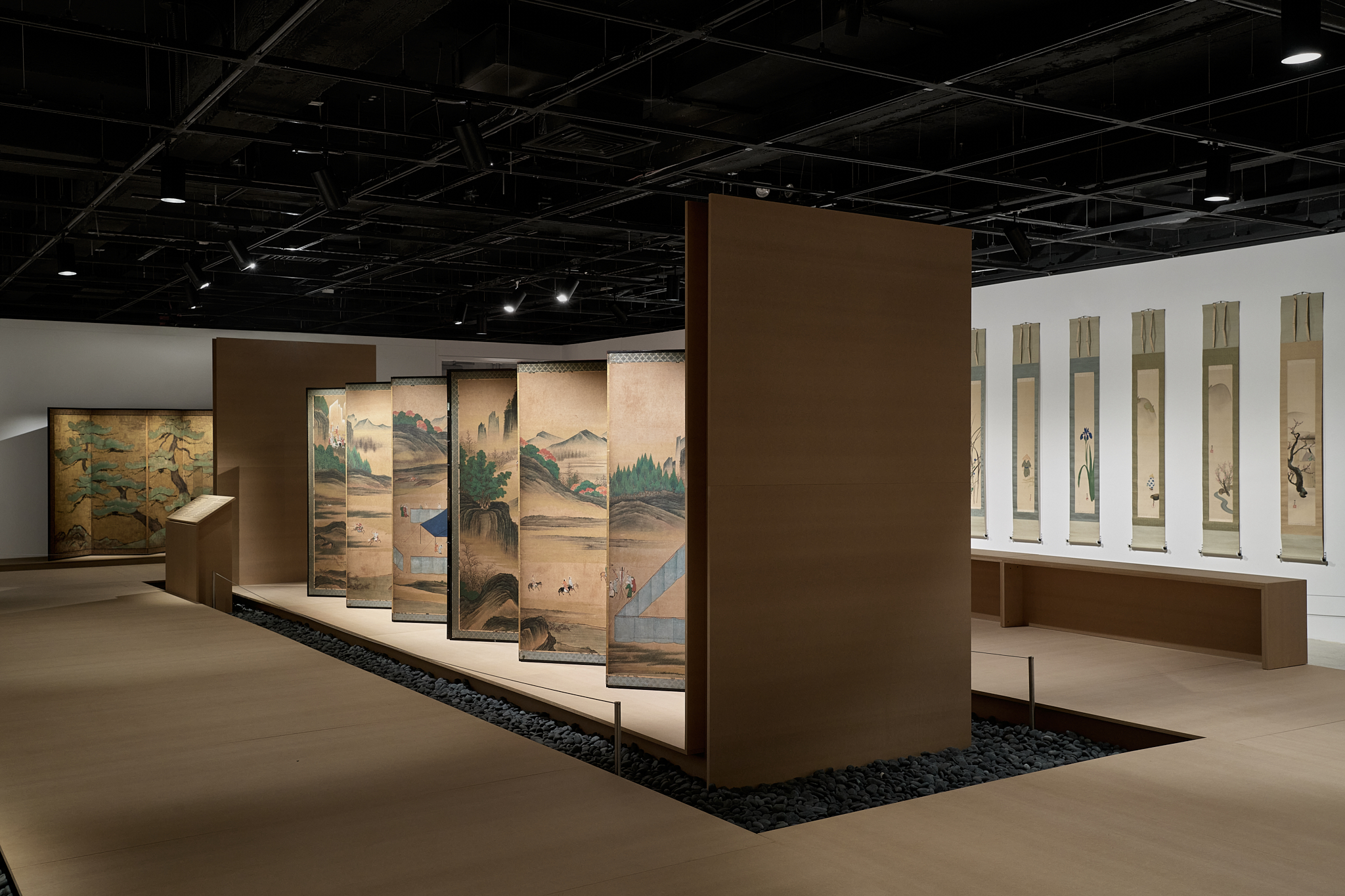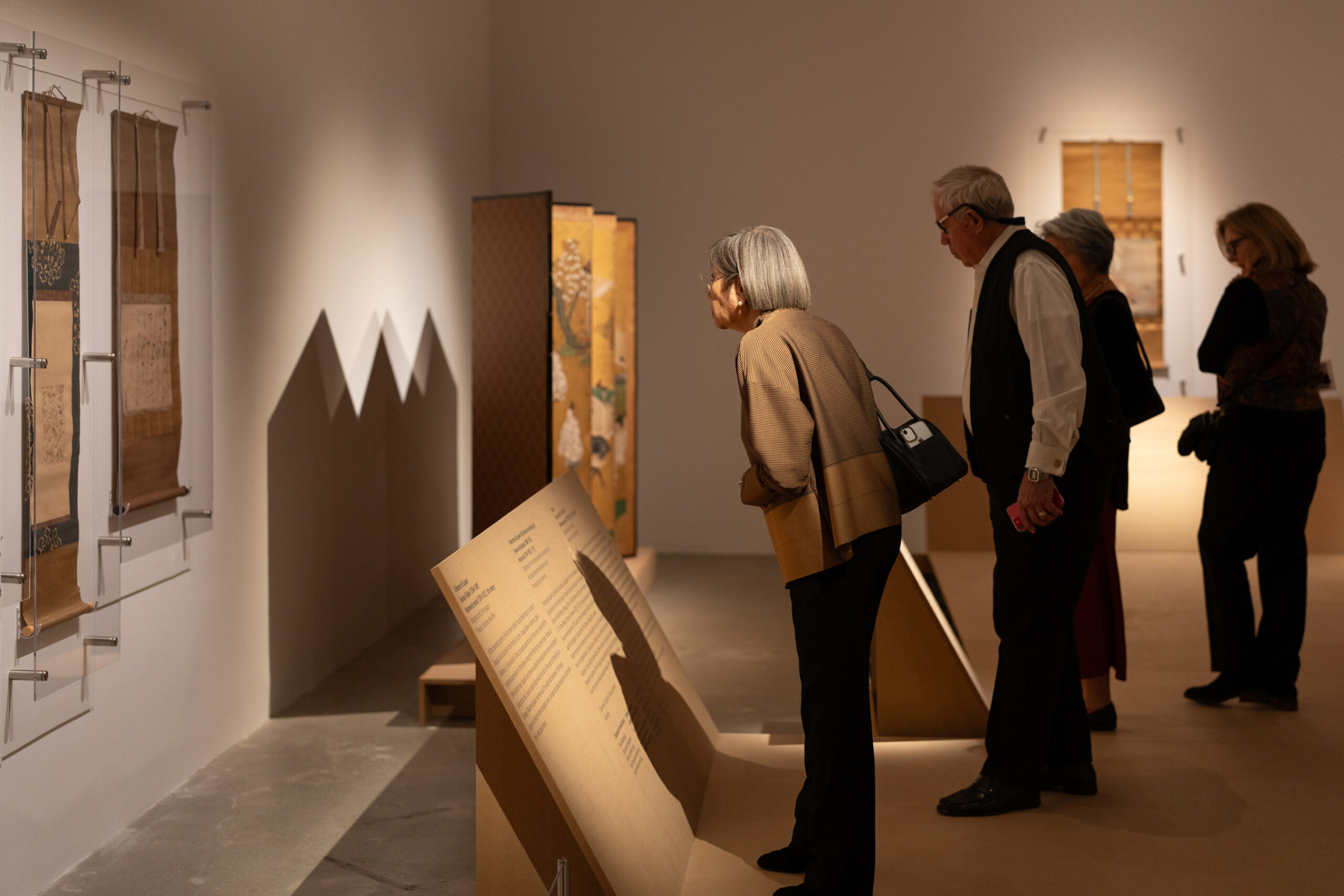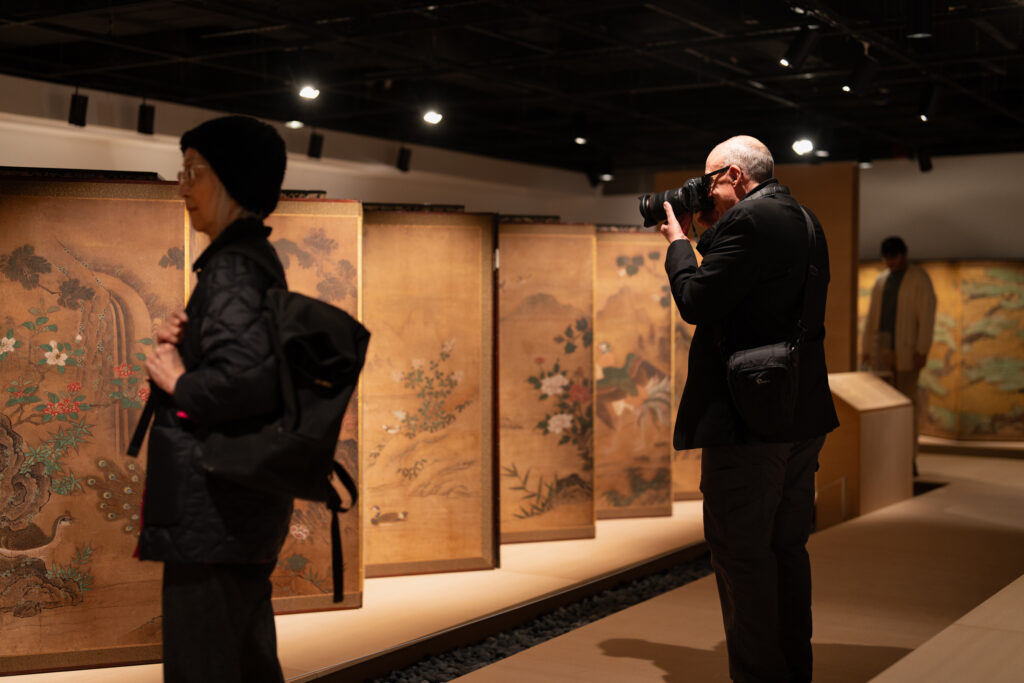Kotobuki
Japan Society, New York City, 2025
Curated by: Miyeko Murase, Michele Bambling Research: Naomi Kuromiya
Exhibition logistics: Stefani Oh
Gallery Interns: Yeeun Joo, Grace Kim, Stephanie Wang
Lighting Design: Takaaki Ando, Ayako Moriyama
Fabrication: Miles Huston, Sebastijan Jemec McKeever Donovan, Davide Balula
Installation & art handling: WittsART
Vinyl installation: DaSign Guy
Photo credits:
Exhibition: Andrew Romer
Opening Reception: Zhen Qin
Curtesy: Japan Society
“Kotobuki: Auspicious Celebrations of Japanese Art from New York Private Collections” explores the auspicious theme of “kotobuki”, or “celebration,” through a selection of paintings, calligraphy, surimonos, textiles, ceramics, and baskets dating from the 12th-21st centuries. Curated by Dr. Miyeko Murase, Takeo and Itsuko Atsumi Professor Emerita of Japanese Art History at Columbia University and Michele Bambling, this exhibition offers a unique opportunity to view important but rarely displayed works from significant private collections in the New York City area.
The exhibition design unfolds through a sequence of different environments. Walking through the exhibition, visitor passes through various private collections composed of heterogeneous artefacts, in terms of material, size and content.
Design’s idea is inspired by traditional Japanese bridges, characterised by a particular layout, often made up of recesses, sudden changes of direction and a propensity for dialogue with the context. The exhibition, in the same way, is set on an elevated path, which insinuates itself between the objects presented, some, like the folding screens, of large dimensions. This broken progression creates pauses, like the bends of a river in which the water stagnates and becomes calm. The form of the exhibition is, therefore, determined by the content: each object has its own specific alcove, a context where it is possible to stop and observe.
A fundamental theme is the protection of the displayed objects. The elevated path creates a physical separation between the observer and the artwork, a distance sometimes reinforced by the presence of architectural elements, such as the supports for texts and graphics, which become a sort of origami, a portion of the floor that folds to become something else: a protection and a support for information.
Particular importance, given the presence of several components cut specifically for the contents, was given to the continuity of colors and materials: every detail, every part of the installation, is made using a single material (raw MDF) and a two-color code (beige and dark gray). In this way the idea of a palimpsest is created, a physical support perceived as continuous, which winds through the different galleries of the Japan Society.

























